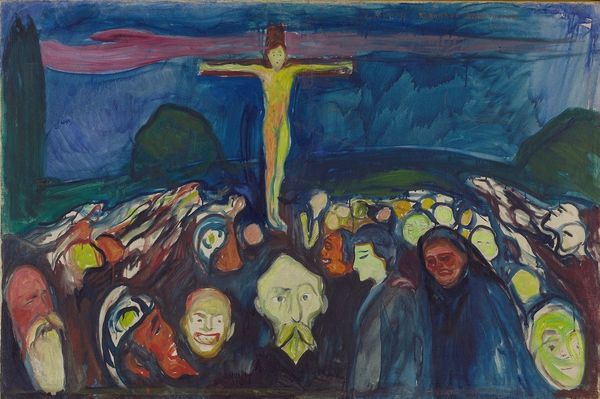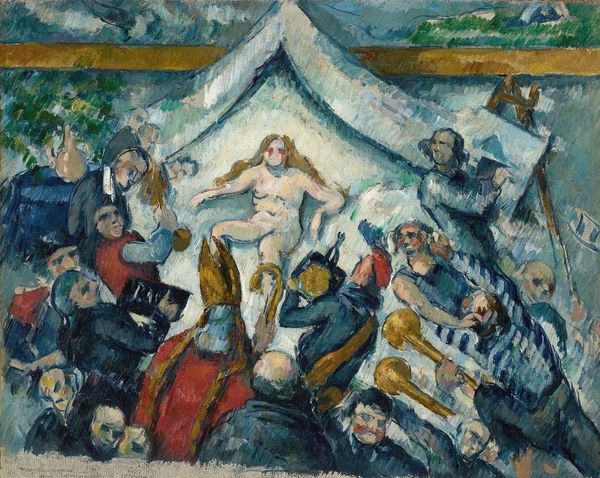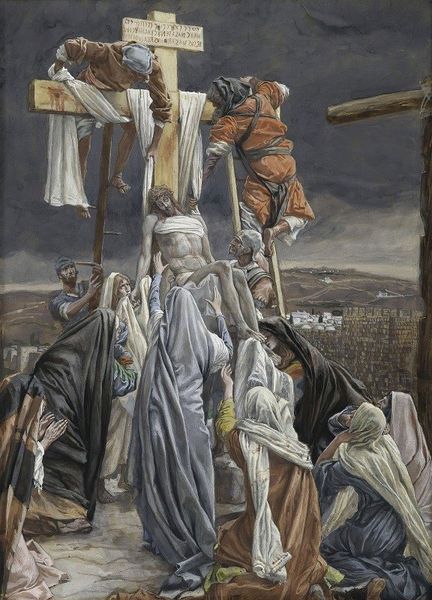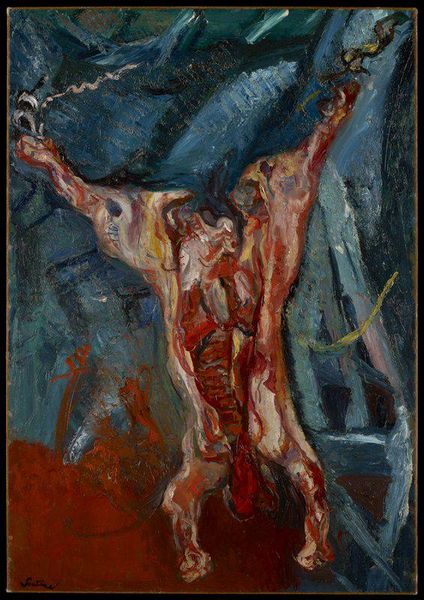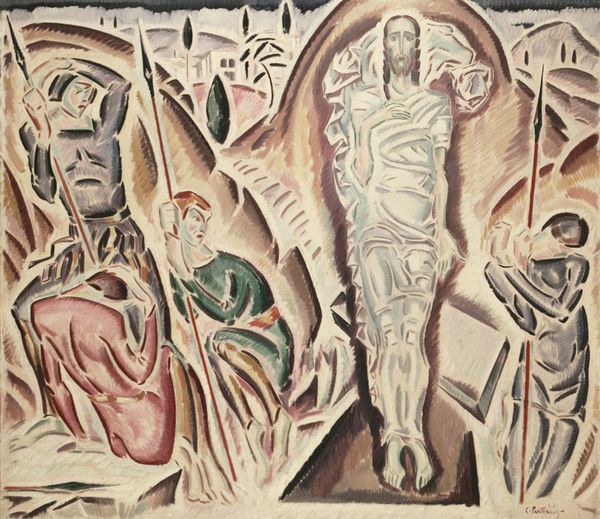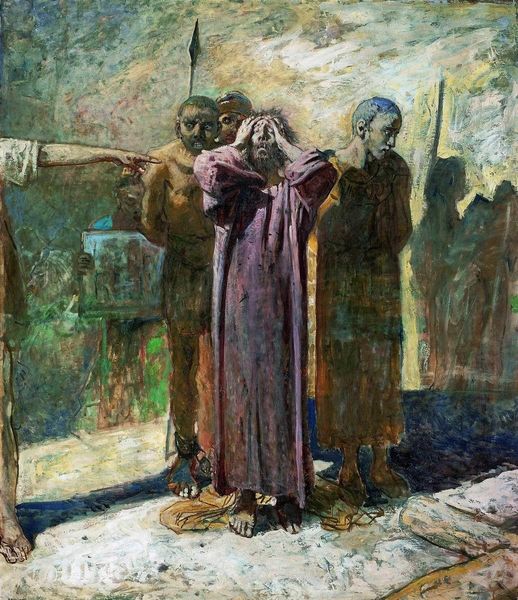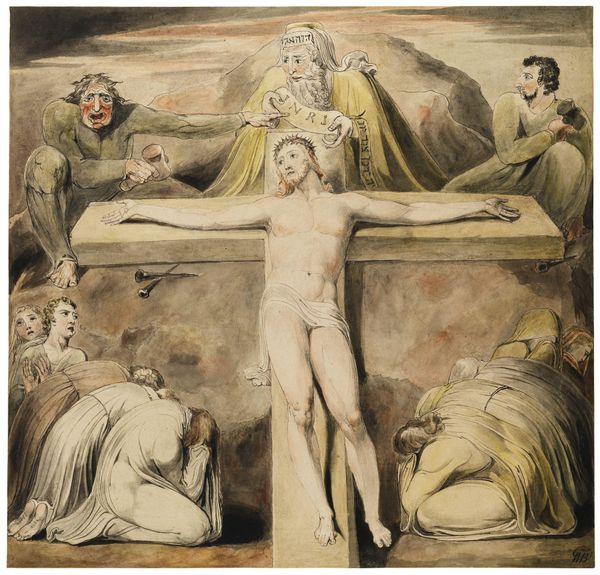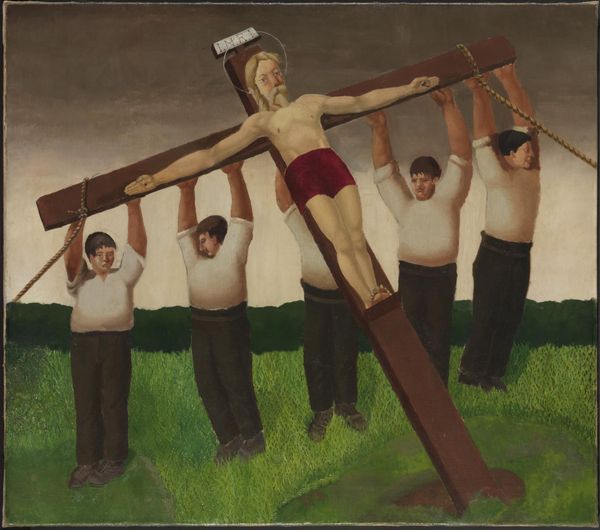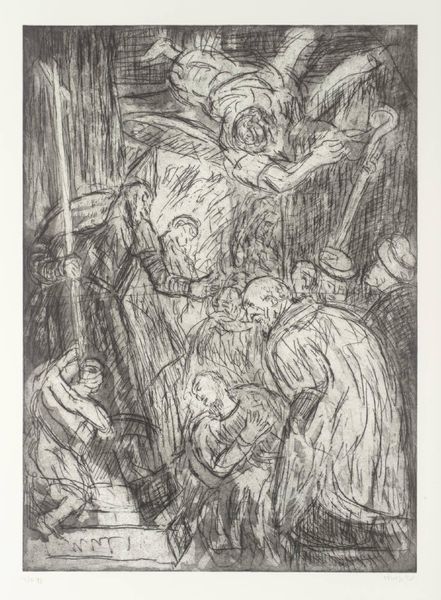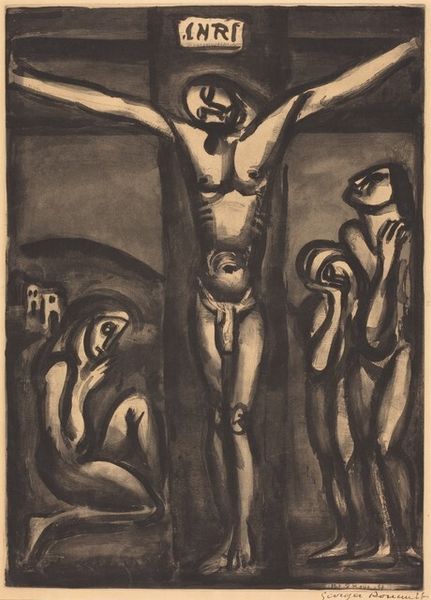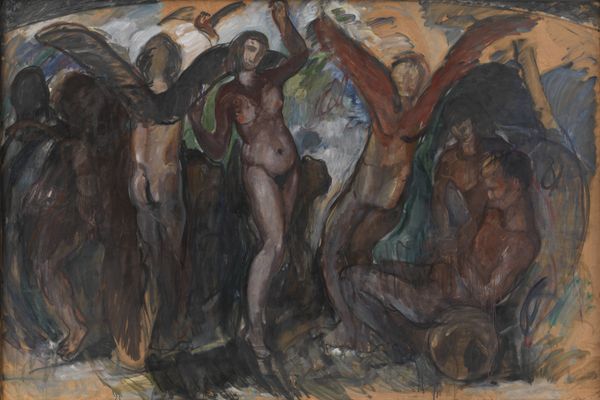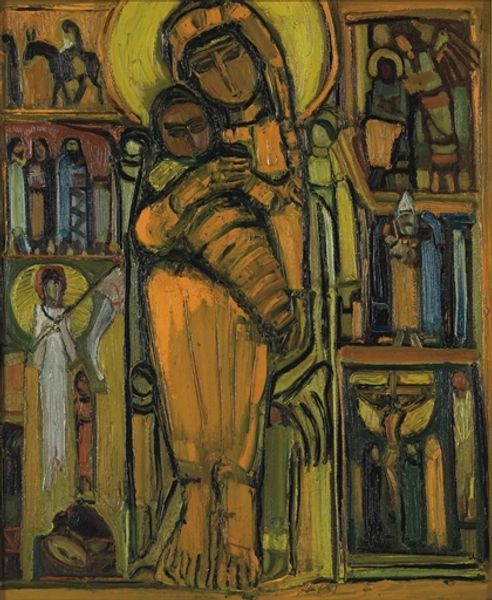
oil-paint
#
narrative-art
#
oil-paint
#
figuration
#
oil painting
#
expressionism
#
history-painting
#
expressionist
Copyright: Public domain US
Editor: Here we have "Hihhulit," an oil painting from 1918 by Tyko Sallinen. It depicts the crucifixion. I am immediately struck by how the artist’s visible brushstrokes create this overwhelming feeling of roughness, an almost sculptural materiality to the figures. How would you interpret the effect of his artistic choices here? Curator: It's compelling to consider the materiality within the socio-economic context of Finland in 1918. Sallinen, painting shortly after Finland declared independence and amidst its Civil War, utilizes the crude, almost peasant-like handling of the oil paint to equate spiritual suffering with earthly toil. The very stuff of the painting – its thick impasto and visible marks – mirror the hardships endured by the working class. Do you notice how this treatment democratizes the scene? Editor: I see what you mean! The figures, especially the onlookers, aren't idealized, almost as if he picked them off the streets and memorialized them. So the rough texture reflects a very physical, grounded reality? Curator: Precisely! Instead of focusing on divine transcendence, Sallinen roots the crucifixion narrative in the tangible suffering of ordinary people. His bold manipulation of oil paint itself becomes a form of social commentary. Editor: That gives me a lot to think about in relation to other artists of the time. The materials become a statement! Curator: Exactly, he transforms something inherently material into something conceptually profound. Consider how this emphasis on raw materials subverts traditional notions of art’s value and its relationship to labor. It definitely reframes our perspective of the work. Editor: This makes me appreciate the painting's intentionality so much more. Seeing it this way makes it more historically conscious!
Comments
No comments
Be the first to comment and join the conversation on the ultimate creative platform.
